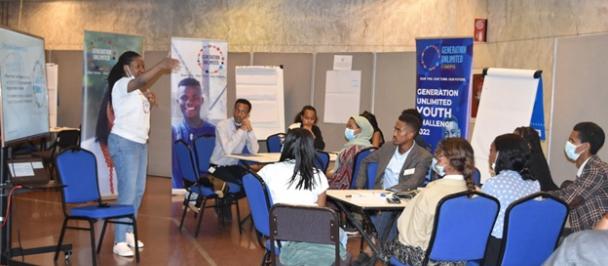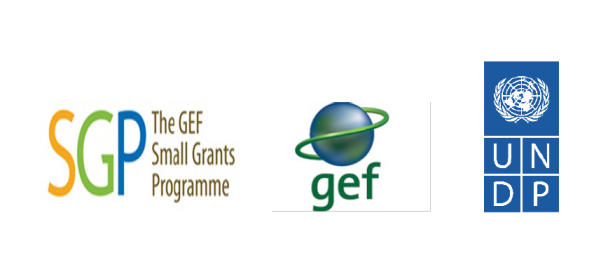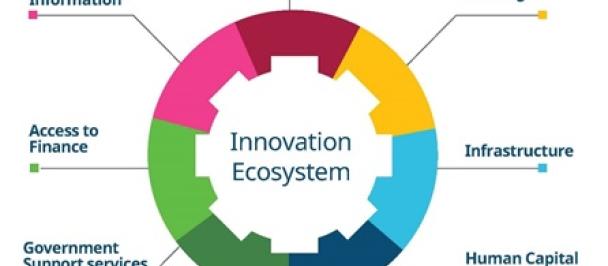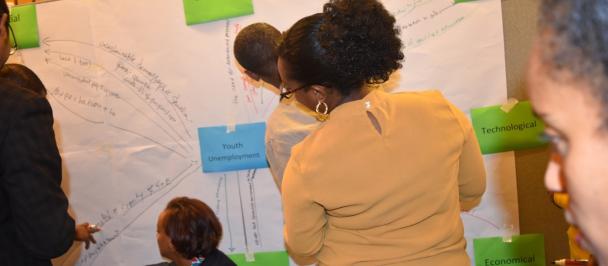Lessons from a livelihood project that builds resilience while addressing humanitarian needs in Ethiopia - By Wubua Mekonnen ***
When a three-year extended drought resulted in the loss of over 65% of the cattle population in Warder and Kebredahar Woredas of Somalia region between 2016-2019, I felt that we were not doing enough to build the resilience of the pastoral communities in the area and history kept repeating itself.
For the last several years, I have worked on climate change and green economy issues and seen positive results. However, there have been setback and the overall picture often looks gloomy. The vulnerability of communities living in climate-induced disaster areas is so entrenched with resource degradation continuing unabated affecting livelihood options that leaves the community constantly depending on humanitarian assistance.
Realizing the gravity of the humanitarian crisis at the time, UNDP, FAO, and UNICEF came together and with funding from the Austria Development Agency (ADA) agreed to pilot a new development approach. The approach, titled New Way of Working (NWOW), sought to bridge the divide between humanitarian and development interventions where a short-term humanitarian response is complemented with medium to long-term development programming to gain better results.
Recipe for success

The project incorporated emergency responses and development assistance intended to improve the livelihoods and food security of 15,406 people in pastoral and agro-pastoral communities in two of the most severely drought-affected zones. Agricultural productivity improved through installation of 19 solar water pumps for small scale irrigation. 126 farmers with a 100 ha of land benefited from the solar irrigation services.
The intervention, a demand-driven solution created a foundation to build long-term resilience at the household and institutional levels. It involved consultations with local communities, authorities, academia and other stakeholders.
Applying the new approach to development: This was a perfect example of UN at work together. UNDP and FAO used water resources management as an entry point for all intended project activities. UNICEF facilitated the project to develop and rehabilitate water points and provide information about the groundwater resource potential. FAO led on activities related to rehabilitation of rangelands, livestock management and animal feed and health. UNICEF and the Region’s Water Resource Bureau worked closely to determine the distribution of surface and underground water sources and rehabilitated and developed irrigation infrastructure and water points.
UNDP focused on building the long-term resilience of the affected communities. We did this by addressing the underlying issues that affect vulnerability, such as skills for alternative livelihoods, awareness of climate risks and proper management of natural resources. In coordination with UNICEF and using the existing boreholes, we developed small-scale irrigation and deployed innovative and efficient water resource management approaches to mitigate the impact of drought and increase food security. These included the efficient utilization of water resources for multiple uses with a single borehole used for drinking water supply, animal water source, irrigation and brickmaking.
Furthermore, these interventions helped to alleviate the burden of work for women and girls who spent long periods of time fetching water. In a markedly patriarchal society of the pastoral communities, the project made a significant breakthrough in including women in project activities. Hamdi Mursal, a woman beneficiary, states “the lives of our group members have been enhanced as their income choices have brought a good return for their households and communities”. Community member’s incorrect misconception about the viability of non-livestock activities has changed and now they see that those involved in alternative income-generating activities are benefiting. Within the first eight months, some women beneficiaries recorded ETB 10,000 profit from their diversified income-generating activities.
With UNDP’s support, communities engaged more actively in watershed management practices, such as soil and water conservation activities. Agro-forestry was used for the rehabilitation of degraded lands and improved agricultural productivity. Sustainable water management systems also helped to foster a longer-term restoration of biodiversity. Through this hands-on practice, communities improved their knowledge around linkages between integrated watershed management, protection of natural resources and drought cycle management. Through the various trainings, 2,642 (40% female) farmers capacity and skills on crop husbandry and agronomic practices enhanced.
New Way of Working in Ethiopia
(In January 2018 the Administrator of the United Nations Development Programme (UNDP) Achim Steiner and the United Nations Under-Secretary-General for Humanitarian Affairs and Emergency Relief Coordinator, Mark Lowcock concluded a three-day joint mission to Ethiopia by urging all stakeholders to increase cooperation to withstand humanitarian and climate-related crises. This video was screened to them and the UN Secretary General as well as high level Ethiopian government officials and members of the development community.)
Livestock production and productivity were improved by increasing the availability of rangeland management. Over 1500 households received animal health interventions and supplementary animal feed which led to saving the lives of 3,000 core-breeding animals and improving milk production. In addition, 60,000 animals from 4,000 households were treated for various diseases hence increasing their health and resilience. The introduction of diversified income generation activities such as barbering, tailoring, salon, beekeeping, petty trading, brickmaking and construction work to local communities including women and people with disabilities helped in boosting households’ resilience to drought and economic shocks.
Agricultural production has improved with some 89 households in Kebridehar and Warder woredas harvesting 2,500 watermelons, 1,500 kg of carrots and 2,500 kg of lemon. 2700 kg of forage seeds including Sudan grass, Rhodes grass, Panicum, Buffelgrass and Moringa olifera were provided to farmers. The project also delivered 1,650 kg of five type forage seeds to Kebridhar and 1,050 kg of two types of forage seeds to Warder woreda as per the preference expressed and available land for planting.
Blended technical interventions: The use of blended interventions such as humanitarian action, disaster risk reduction, climate change adaptation, agriculture and water resources management and used water as the centre of all interventions contributed to the success of the project. The approach has helped in addressing both humanitarian and development interventions in a single project and with the technical expertise and mandate of the three UN agencies.
Multisectoral and multi-partner approach: The project followed a multi-sectoral and multi-partner approach. This enhanced cooperation among the different UN agencies and helped to avoid overlaps and duplications in donor support. Governmental and non-governmental stakeholders participated in the design and implementation of the project. These include the Finance & Economic Development Bureau, Disaster Prevention & Preparedness Bureau, Water Bureau, Agriculture bureau, Pastoral & Livestock Development bureau, Jijiga & Kebredehar Universities, and local communities.
Natural resource management using area closure, restoration of native seeds and pasture management has contributed to the rehabilitation of the ecosystem and local environment. Approximately 94 hectares of land was cleared of Prosopis (an invasive species) and subsequently enclosed for forage production and restoring rangeland.
The introduction of rangeland management contributed to the resilience of the local community to climate-induced shocks. In line with this, the project has carried out awareness-raising and advocacy activities for the establishment of pasture exclusion areas, overseeding pasture with collected native seeds, the establishment of forage farms and the introduction of spate irrigation to restore rangeland.
What’s next?
While the cost of humanitarian assistance is high, its successes are short-lived. Moreover, the need for humanitarian assistance has grown so dramatically that we are unable to respond to all the queries arising from it. There is an urgency to develop further the humanitarian and development nexus to reduce risk and vulnerability through the implementation of the 2030 Agenda for Sustainable Development.
Though we are obliged to provide humanitarian assistance when the need arises especially in situations of armed conflict and others, we need to focus on preventing climate-induced crisis. In doing so we are not only improving the lives of the most vulnerable but also ensuring that development gains progress to all communities including those affected by the unprecedented crisis.
For someone like me, I am excited to see the success of this intervention that has brought a shift in the way we are implement our projects. More collaboration, adoption of a long-term vision and creating opportunities is needed to move communities from reliance of humanitarian supplies to development. The adoption of the 2030 Agenda and the Sustainable Development Goals (SDGs) set out not just to meet needs, but to reduce risk, vulnerability and overall levels of need, providing a reference frame for both humanitarian and development actors to contribute to the common vision of a future in which no one is left behind.
*** The blog is written by Wubua Mekonnen, GEF Programme Specialist at UNDP Ethiopia. She is also the acting team leader for the Climate Resilience and Environmental Sustainability Unit.

 Locations
Locations


